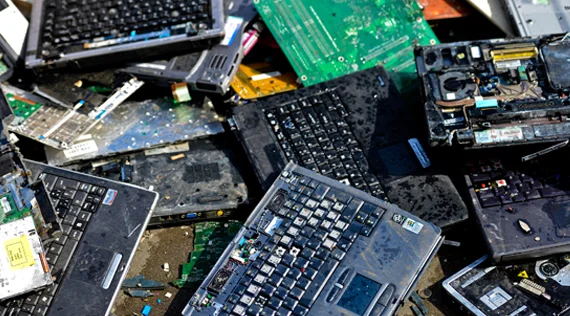
SEATTLE (Scrap Monster): To develop eco-friendly electronics such as sensors and circuit boards, Dr Valerio Beni is following the paper trail – literally.
An expert in green chemistry at Swedish research institute RISE, Beni has switched his focus to wood from pulp in a bid to make consumer electronic devices that have no carbon footprint and are easier to recycle.
He and his colleagues discovered that producing pulp and turning it into paper for a new generation of electronics required burning too much energy for the effort to be as environmentally friendly as they had hoped.
‘So we thought, why don’t we take a step back and go to the initial material for making paper?’ said Beni. ‘That is wood.’
He leads a research project that received EU funding to explore ways to make consumer electronics with wood-based materials.
Called HyPELignum, the project runs for four years through September 2026 and brings together research institutes, a university and industry representatives from Austria, the Netherlands, Slovenia and Spain.
The life cycles of current electronics are unsustainable. In addition to the energy and raw materials needed for production, the gadgets result in mountains of waste once they get discarded.
In 2022, the world generated a record 62 billion tonnes of e-waste – or 7.8 kilogrammes per person – with Europe producing 17.6 billion tonnes, more than any other region, according to United Nations data.
That worldwide mountain has almost doubled from 34 billion tonnes in 2010 and is projected to increase to 82 billion tonnes by 2030.
In addition to growing fast, e-waste is complex to manage, according to the UN. In 2022, only about a fifth of global e-waste was recycled – although Europe fared better by recycling around 43%.
The HyPELignum team is developing two types of wooden circuit board.
One is made of thin layers of wood, a bit like plywood. The other is constructed from cellulose fibres extracted from wood and wood waste.
‘The idea is to try and replace some of the high carbon-intensive materials in electronics with low carbon-intensive material,’ Beni said.
The circuits are printed – rather than etched – onto the wooden boards using conductive metal inks developed by the project. These inks also contain cellulose and bio-based plastics produced from wood.
At the end of their life, the wooden boards should be easier to recycle than traditional circuit boards. It might even be possible to compost them.
Courtesy: www.zmescience.com



| Copper Scrap View All | |
| Alternator | 0.39 (0) |
| #1 Copper Bare Bright | 4.55 (0.05) |
| Aluminum Scrap View All | |
| 356 Aluminum Wheels (Clean) | 0.83 (0) |
| 6061 Extrusions | 0.73 (0) |
| Steel Scrap View All | |
| #1 Bundle | 385.00 (0) |
| #1 Busheling | 405.00 (0) |
| Electronics Scrap View All | |